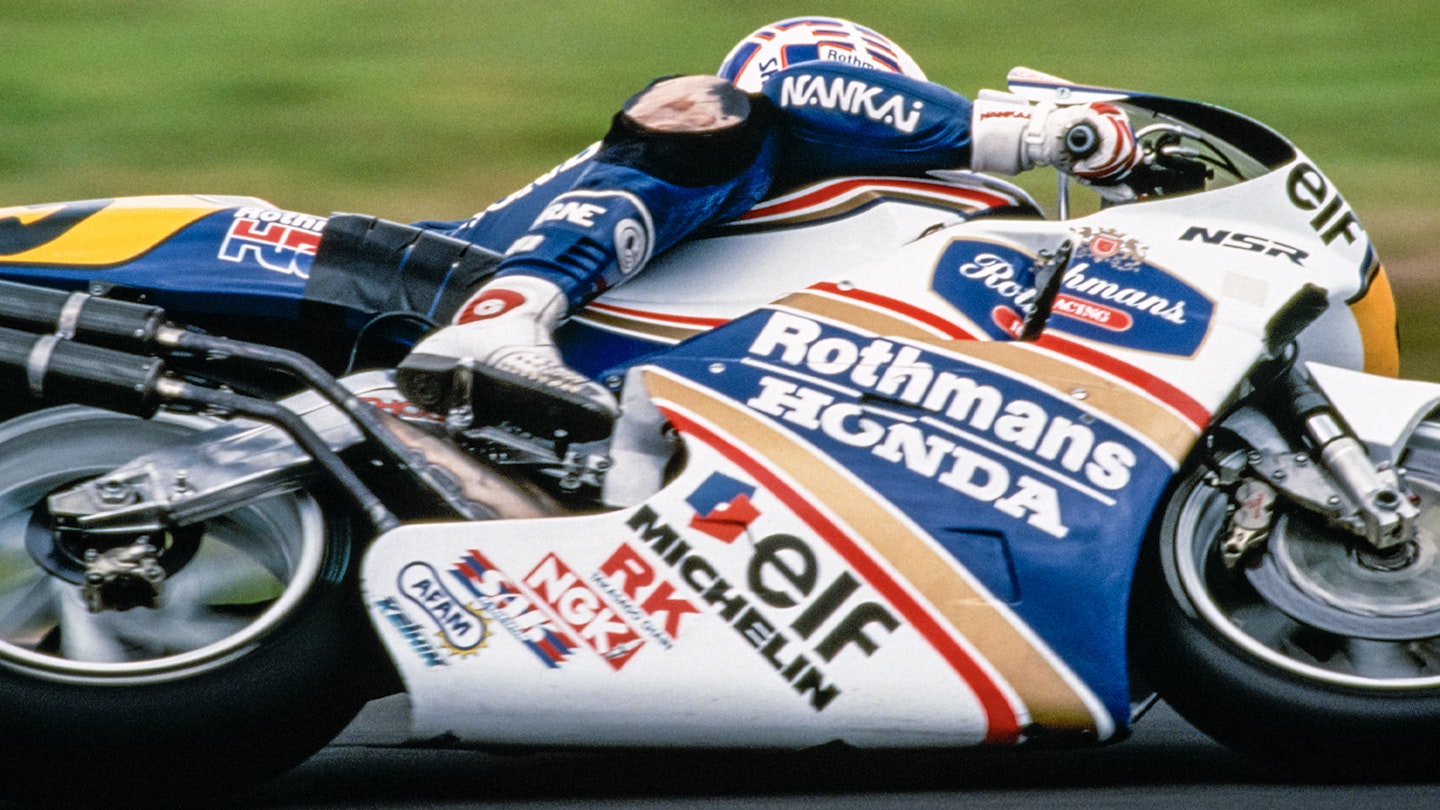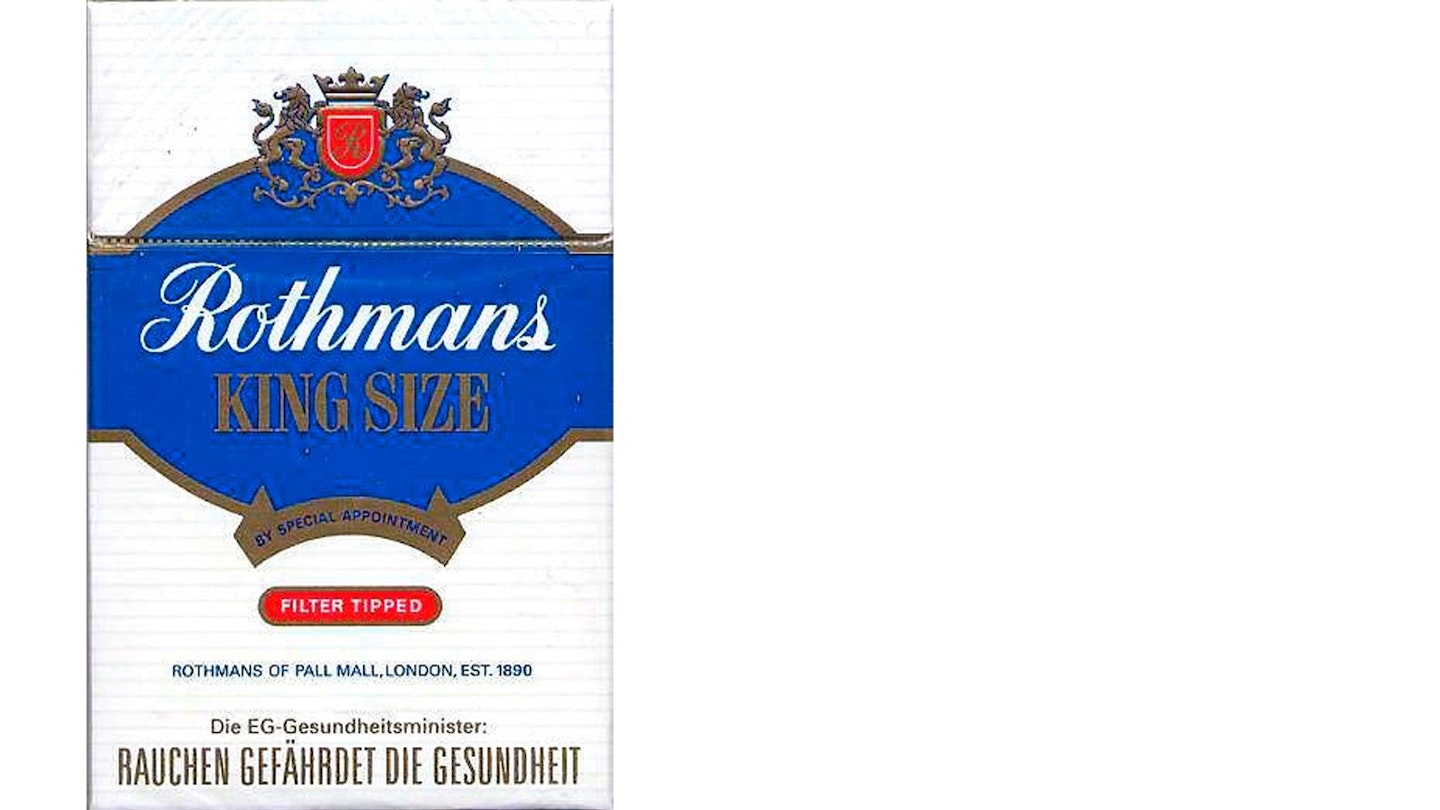SMOKING-SPONSORED RACERS
Tobacco companies coughed up vast sums to sponsor motorcycle racing from the 1970s into the next millennium. The formula of ash, cash and thrash produced some memorable teams and liveries
Words MARK GRAHAM


Cigarettes and motorcycles were always a match made in heaven – or at least a happy union of mutual convenience until the World Health Organisation got serious about the dangers of tobacco. The Marlboro Man was no doubt ideal for convincing Americans that smoking was a manly pursuit bringing many benefits (aside from the possible drawback of early death), but men dressed as cowboys were less convincing in Europe.
Philip Morris &Co realised this. Ellen Merlo, vice president of marketing, said: “Formula One and IndyCar racing are a modern dimension to the Marlboro Man. The image of Marlboro is rugged, individualistic, heroic.”
And what could be more heroic than a rugged individualist dicing with death on a motorcycle?
Gold Leaf, a brand owned by British American Tobacco, had been first into the Formula One arena when they backed Team Lotus in 1967; Philip Morris attached their Marlboro brand to BRM in 1972, and that same year embarked on personal sponsorship of MV Agusta teamsters Giacomo Agostini and Alberto Pagani. They had followed John Player & Sons, who began supporting the Norton Race Team in 1971. But while John Player backed out in 1974, Philip Morris kept their hand in with Ago as Gauloises, the French state-owned brand, started backing star French riders Patrick Pons and Christian Sarron.
The late-1970s’ level of fag sponsorship was small beer compared to the cash that cascaded into the GP paddock in the 1980s. Marlboro Yamaha Team Agostini arrived in 1982 and scooped three 500cc World Championships (1984, 1986 and 1988) before triple champ Eddie Lawson decamped to Rothmans-backed Honda to win the 1989 title (note that the cigarette got top billing, ahead of even the factory – a formula that was to become standard).
With Lucky Strike teaming up with Suzuki in 1985, the GP paddock was almost instantly transformed from casual Continental Circus into a uniformed parade of corporate muscle. The money improved the racing. Bigger backing meant better bikes and up to $20 million being spent each year by the major players. These were vast numbers compared to what used to be spent on a factory team – but a mere bagatelle to the tobacco giants, whose net global sales ran into billions.
Rothmans were first to leave the party in 1993, but there was no shortage of eager replacements to prop up the factory Honda operation, with the Repsol oil company generously stepping in. The remaining players would grimly hang on to one of the few sports where they could peddle their products to an audience that plainly had fewer scruples than most about the deleterious effects of their wares.
TV advertising for cigarettes had been banned as early as 1968, when concrete evidence had emerged via the US Surgeon General in 1964 that cigarettes were bad for your health. And yet Norton happily dressed both race and road bikes in John Player regalia throughout the ’70s. Marlboro, Rothmans and Lucky Strike liveries were seen as highly desirable on road bikes of the ’90s, and the black-and-gold John Player Special look is as esteemed now as ever.
Vast resource went into making cigarette packets appealing, into advertising a brand in a manner to almost certainly connect with the desired audience. That same level of thinking and execution went into making sponsored racing motorcycles look very good indeed.
Whether we like it or not, we were all willing participants in a big sell. A sell that enriched the racing to great effect.
John Player 1972 Norton Commando 750

It’s 1972 and the John Player Norton team are proudly posing with their team motorhome. Norton were the first bike team to benefit from fag money and as well as painting their bikes in corporate colours, their race numbers were usually Number 6 or Number 10 to match Player’s big selling brands, though star rider Peter Williams was an Embassy smoker.
The motorhome got them paddock kudos, too. It is a Rectrans Discoverer styled by none other than Larry Shinoda, the man responsible for the 1963 Chevrolet Corvette and Ford’s Boss 302 Mustang. The JPN Discoverer was last seen near Guildford in 2020, and is now believed to be in the USA undergoing restoration. The Discoverer could be ordered complete with a ‘Thermosan’ waste disposal system in which the contents of the toilet were incinerated via the exhaust system – seriously.
Kool 1982 Kawasaki KR1000

KOOL were an American menthol cigarette brand who used motorcycle racing as part of their European promotion scheme. In the 1980s they forged a strong link with Kawasaki France Endurance – and their bikes were always well-turned out and highly competitive. Jean Lafond is pictured here in the 1982 Le Mans 24 hours, in which he finished second overall with Hervé Guilleux. Lafond won in 1981, sharing a Kawasaki with Raymond Roche, later to become 1990 World Superbike Champion on a Ducati.
